Acoustic innovators Sound Reduction Systems Ltd have developed Raincheck, the perfect acoustic damping material to reduce the noise generated by rain falling on metal profiled roofing systems. Raincheck is a 1mm thick, 1.9kg/m2, self-adhesive damping membrane.
Rain falling on metal profiled roofs causes a nuisance in many different environments, including commercial offices, schools, hospitals, and industrial units.
The problem of Rain Noise on Metal Roofing
The problem of rain noise on profiled metal roofing systems is a well documented one, yet a test procedure to measure rain noise in the laboratory was only officially published in 2006, after extensive research by the Building Research Establishment. BS EN ISO 140-18:2006[1] outlines a method of simulating rainfall under ideal conditions, using a water tank with a perforated base suspended above the test specimen, with a receiver room below. Drop diameter and flow rate can be controlled, flanking sound transmission suppressed, and background noise monitored, making the process reproducible. Such controlled conditions would not be possible in the “real world”, outdoor measurements are not practical, nor would they yield any useful results for comparing different acoustic damping systems. Real rainfall can only be considered useful for validation purposes.
|
Rainfall Type |
Rainfall rate (mm/h) |
Volume Median Drop Diameter (mm) |
Fall Velocity (m/s) |
|
Intense |
15 |
2 |
4 |
|
Heavy |
40 |
5 |
7 |
Characteristic parameters for artificial raindrop generation[1]
BS EN ISO 140-18:2006[1] outlines that the rainfall type used for comparison between different products shall be “Heavy” rain. Heavy rain, which has a rainfall rate of 40mm/h, simulates rainfall that occurs once every 50 years. “Intense” rain, which has a rainfall rate of 40mm/h and is also described in BS EN ISO 140-18:2006[1], simulates rainfall conditions that occur once ever 2 years.
Within BS EN ISO 140-18:2006[1] the measurement of rain noise radiated by a roof element is quoted in terms of the sound intensity level LI, in dB re 10–12 W/m2. This can either be measured directly using an intensity probe, or calculated from sound pressure level measurements in a test room beneath the roof element.
The problem of noise created by rainfall onto metal profiled roofing is highlighted in Building Bulletin 93[2], the document that governs acoustic performance within schools. Although BB93[2] does not set any performance targets itself, it recognises that commercial soundproofing and damping materials are required and that roofs that do not have this treatment are unlikely to provide sufficient resistance to the ingress of rain noise.
Other standards are a little more specific. Speaking with respect to the problem of rain noise in schools, BREEAM[3] recommends that “the reverberant sound pressure level in a space that has been calculated using laboratory test data with heavy rain noise excitation as defined in ISO 140-18[1] should not be more than 20dB above the indoor ambient noise levels in table 1.1 of BB93[2].”
Health Technical Memorandum 08-01: Acoustics[4], the document that governs acoustic conditions within hospitals, specifies similar criteria: “indoor ambient-noise levels during “heavy” rainfall, as described in BS EN ISO 140-18[1], should not exceed the intrusive noise criteria in Table 1[4, page 3] by more than 20 dB(A), or should not be more than 65 dB(A), whichever is lower.”
All of the above documents recognize that profiled metal roofing used without a damping material is unlikely to provide sufficient resistance to impact sound from rain on the roof.
How to Reduce Rain Noise on Roofs
The solution is SRS Raincheck.
Test Results
In independent acoustic tests it was shown that the addition of Raincheck to 60% of the area of a profiled metal ceiling yielded large reductions in the sound intensity level:
Test reference: WS219329 02/09/2004. Test subject: (3.7m2) 5no 400mm wide, 0.9mm gauge, 3.5Kg/m2, ribbed aluminium standing seam roof with Stucco emboss, installed at a pitch of 7° below the water tank.
Heavy Rainfall - Simulated conditions for rainfall that occurs every 50 years
Moderate Rainfall - Simulated conditions for rainfall that occurs every two years
Installing Soundproofing to reduce rain noise on metal roofs
Installation of Raincheck onto profiled metal roofing is very simple. To begin installation a small section of the carrier paper is removed from the back of the Raincheck and the exposed self adhesive is used to attach Raincheck to the metal profile. Once the initial contact is made moderate hand pressure or a hand roller should be used to compress the Raincheck to the profile metal roof, with the installer removing the carrier paper as they work along the profile. As Raincheck is lightweight and flexible it will easily mould to the contours of the roof.
For the best results SRS recommend that a surface area equivalent to 60% of the total roof size is treated with the Raincheck product, using an even distribution of the material across the space.
SRS Raincheck is the perfect solution to the issue of rain noise in commercial, industrial and educational environments. For a demonstration please see our YouTube channel at www.youtube.com/soundreduction for a demonstration. Should you require further details, a sample of Raincheck, or to discuss your particular application in greater detail, please feel free to contact our industry leading technical team on Tel: 01204 380074 or email info@soundreduction.co.uk. All product information can be downloaded from www.soundreduction.co.uk
References
[1] International Standards Organisation. Acoustics - Measurement of sound insulation in buildings and of building elements - Part 18: Laboratory measurement of sound generated by rainfall on building elements. British Standard BS EN ISO 140-18:2006.
[2] Department for Education and Skills. Acoustic Design of Schools. DfES Building Bulletin 93. London, The Stationary Office, 2004.
[3] BRE/Carl Hopkins. Rain Noise from Glazed and Lightweight Roofing. Information Paper IP 2/06. January 2006.
[4] Department of Health. Specialist Services. Health Technical Memorandum 08-01: Acoustics. London, The Stationary Office, 2008.







